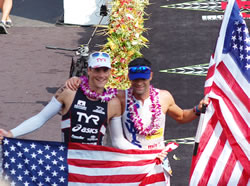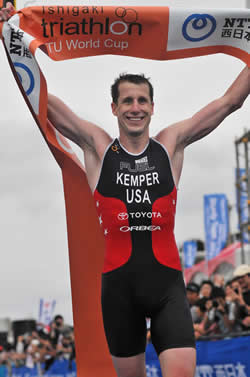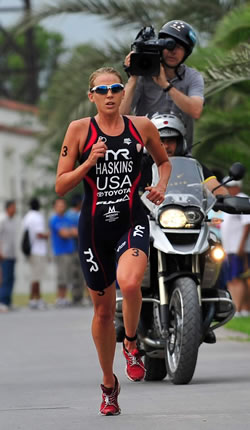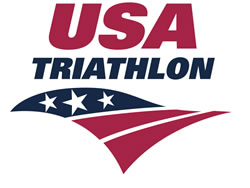Six-race Series Will Help Prep U.S. Athletes for 2012 Olympic Games
USA Triathlon
December 28, 2010 (Colorado Springs, CO) – With the debut of the USA Triathlon Elite Race Series in 2011, USA Triathlon has created a domestic, six-event series that delivers an opportunity for the nation’s top Olympic-distance triathletes to compete for more than $300,000 in prize money and a series title—all while honing the draft-legal racing skills necessary to challenge for the podium at the 2012 London Olympic Games.
The six events that comprise the series will be held in Orlando Region, Fla. (March 5), Miami, Fla. (May 22), Seattle Region, Wash. (June 25), San Francisco, Calif. (July 9), Buffalo, N.Y. (Sept. 24) and Myrtle Beach, S.C. (Oct. 8). Each site also will host an age-group race in conjunction with the elite event.
“The USA Triathlon Elite Race Series offers elite triathletes the opportunity to compete in the type of high-level, draft-legal events that are rarely contested in the United States,” USA Triathlon National Events Director Jeff Dyrek said. “Additionally, multisport fans on both coasts will have the chance to watch America’s Olympic hopefuls in action and witness firsthand the excitement of draft-legal racing.”
Each event will offer prize purses ranging from $30,000 to $75,000. A total purse of $305,000 will be on the line over the course of the series.
To be eligible for the series title, an athlete must compete in a minimum of three series events. Each athlete’s top three finishes will be used to calculate the series standings. The top 10 finishers in each event will earn points toward the series title and a $60,000 overall series prize purse.
The overall series winner for each gender will earn a $10,000 bonus. The top five men and women in the series standings will split the overall series prize purse.
Both the USA Triathlon Elite National Championship in Buffalo, N.Y., on Sept. 24 and the Oct. 8 series finale in Myrtle Beach, S.C., will be worth double points. The Buffalo event will feature a $75,000 prize purse—$25,000 of which will serve as a bonus for the top-five American finishers. In Myrtle Beach, $50,000 will be up for grabs.
Several of the events may be a part of the to-be-announced 2011 International Triathlon Union Pan American Cup series. A maximum field of 75 elite athletes per gender will toe the starting line.
“It is very exciting to have a draft-legal race series in the U.S. leading into London 2012. Draft-legal races are extremely different from non-drafting races, and for U.S. athletes it is important to race in this format,” said Jarrod Shoemaker, 2008 U.S. Olympian and USA Triathlon National Team member. “This series also will increase exposure for both athletes and media to the draft-legal format.”
The series will kick off with a pair of early season sprint-distance races in Florida—The Draft Legal Challenge at Clermont on March 5 outside Orlando, Fla., and the May 22 Miami Speed Triathlon in Miami, Fla. The Draft Legal Challenge at Clermont will serve as the first-ever USA Triathlon Elite Sprint National Championship.
From there, the series will resume on June 25 with the TriMonroe Gateway to Adventure in Monroe, Wash., which is located outside Seattle.
The popular San Francisco Triathlon at Treasure Island will serve as the fourth stop of the series on July 9.
The Nickel City Triathlon in Buffalo, N.Y., on Sept. 24 will serve as event No. 5 of the series, as well as the 2011 USA Triathlon Elite National Championship.
The Myrtle Beach Triathlon, which will simultaneously host the 2011 USA Triathlon Long Course and Club National Championships, will conclude the series on Oct. 8.
Fans in attendance at series events will have the opportunity to experience the draft-legal style of racing found on the ITU’s World Championship Series circuit and in the Olympic Games. This format is exceptionally spectator friendly with multi-loop courses on the bike and run.
“Spectators who attend these races will be able to watch more of the race than at any other triathlon,” Shoemaker said. “With athletes passing the same point multiple times during the race, it is a more energetic environment for both spectators and athletes.”







